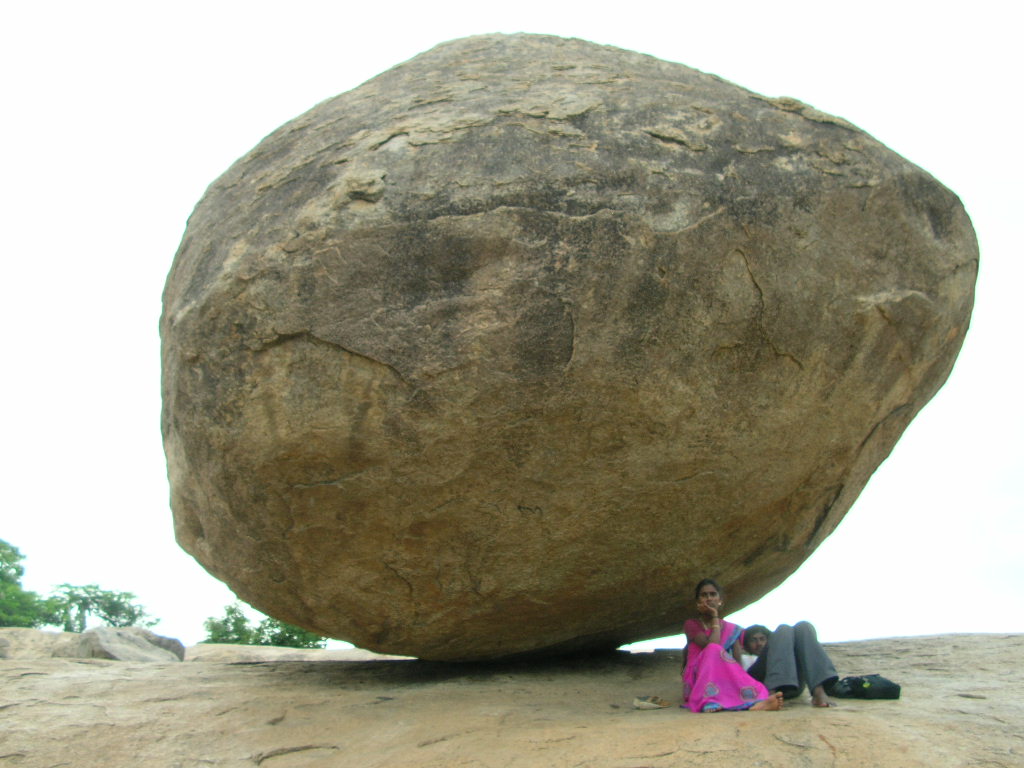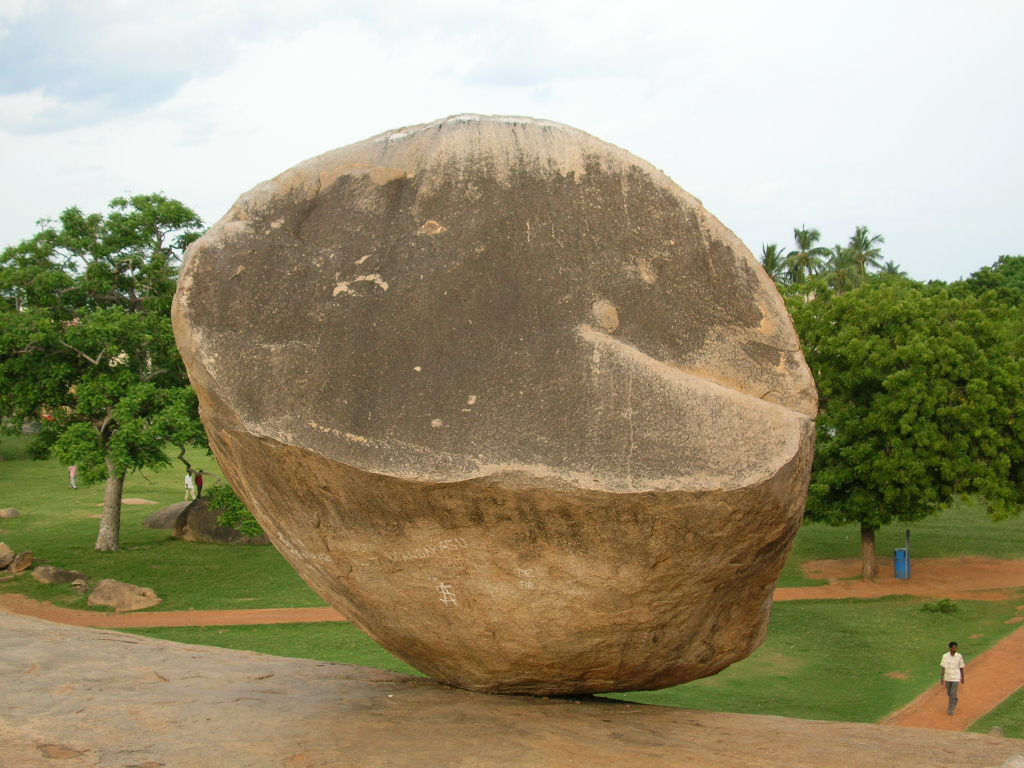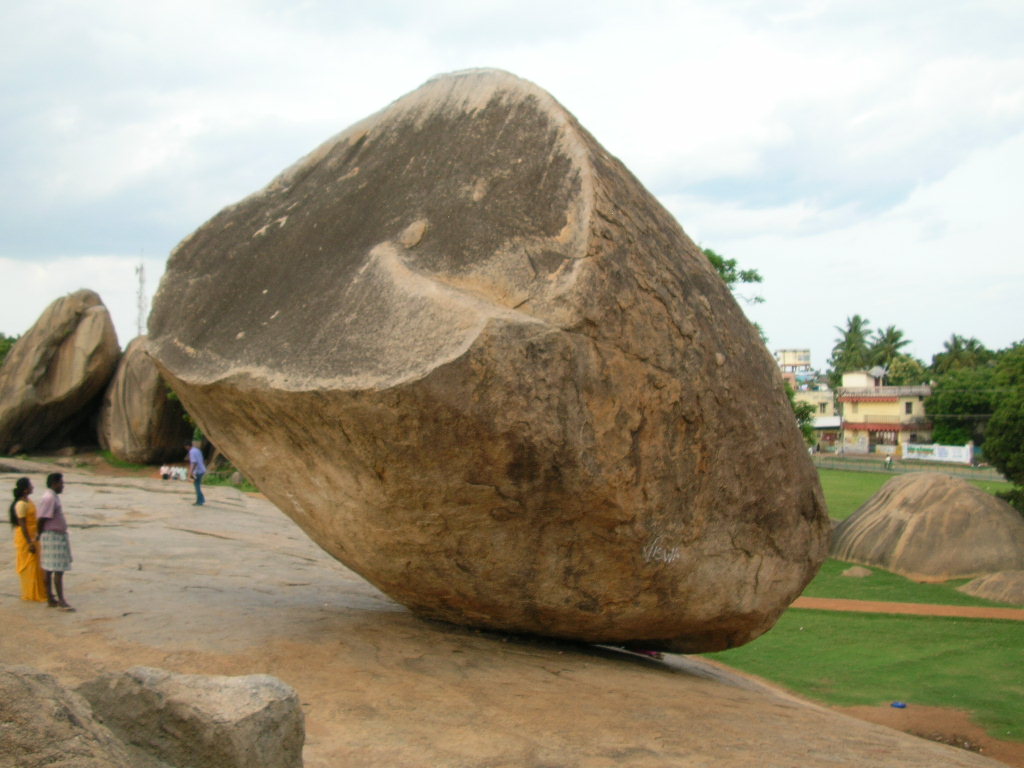Mahabalipuram and Krishna's Butter Ball EarthCache
Mahabalipuram and Krishna's Butter Ball
-
Difficulty:
-

-
Terrain:
-

Size:  (not chosen)
(not chosen)
Please note Use of geocaching.com services is subject to the terms and conditions
in our disclaimer.
Krishna's Butterball is a giant, precariously perched, natural
granite rock perched on a hillside. It provides welcome shade if
you dare to sit underneath it!
![Member of Middle Tennessee GeoCachers Club [www.mtgc.org]](https://imgproxy.geocaching.com/3e4f8ad26cd3b430ca7261e8e4b4d4576787e216/687474703a2f2f7777772e6d7467632e6f72672f6d7467635f6d656d6265722d62616e6e65722e676966)
This Cacher Served Honorably in the
United States Army and is a Proud Member of the MAGC:

This is an EarthCache. An Earthcache is an educational form of a
virtual cache. The reward for these caches is learning more about
the planet on which we live - its landscapes, its geology or the
minerals and fossils that are found there. Earthcaches are
developed in association with the Geological Society of
America.
Click Here For Earthcache
Information
Krisna’s Butter Ball is but one of many attractions within
Mamallapuram or Mahabalipuram which is a tourist town 60 km south
of Chennai made famous by its granite stone carvings.

Locally one may find many famous stone carvings, the most famous
of which is the Shore Temple, which was saved from the sea and
subsequently excavated and has become one of the most beautiful
locations in the region. (Note: The area around Mamallapuram was
devastated by the 2004 Indian Ocean tsunami: you will see
shanty-towns built for affected fishermen and much of the greenery
has been swept away.)

There are no documented legends attached to how Krisna’s Butter
Ball came to rest in this particularly precarious position. From
one angle, this free-standing granite stone appears to have sheared
off some larger formation, but there is no evidence of any nearby
location where it might have originated.

Could the stone have come to find itself here, transported by some
glacial activity or even possibly the result of ice age
erosion?
Glacial Erosion is the wearing-down and removal of rocks and soil
by a glacier. Glacial erosion forms impressive landscape
features,including glacial troughs (U-shaped valleys), aretes
(steep ridges), corries (enlarged hollows), and pyramidal peaks
(high mountain peaks with three or more aretes).
Erosional landforms result from abrasion and plucking of the
underlying bedrock. Abrasion is caused by the rock debris carried
by a glacier, wearing away the bedrock. The action is similar to
that of sandpaper attached to a block of wood. The results include
the polishing and scratching of rock surfaces to form powdered rock
flour, and scratches or striations which indicate the direction of
ice movement. Plucking is a form of glacial erosion restricted to
the lifting and removal of blocks of bedrock already loosened by
freeze/thaw activity.
The most extensive period of recent glacial erosion was the
Pleistocene epoch (1.6 million to 10,000 years ago) in the
Quaternary period (last 2 million years) when, over a period of 2
to 3 million years, the polar icecaps repeatedly advanced and
retreated. More ancient glacial episodes are also preserved in the
geological record, the earliest being in the middle Precambrian
era(4.6 billion to 570 million years ago) and the most extensive in
Permo-Carboniferous times.
Additional References:
Glacial Erosion
-http://www.geography.learnontheinternet.co.uk/topics/glaciation1.html#erosion
http://www.tiscali.co.uk/reference/encyclopaedia/hutchinson/m0035305.html
Wikipedia (Glacier) - http://en.wikipedia.org/wiki/Glacier
Erosional Processes
-http://gemini.oscs.montana.edu/~geol445/hyperglac/eroproc1/
My guide tells me that attempts to move this stone, even using
several elephants, was not successful.

To claim this cache please do the following:
(1) Post a photo of yourself and/or GPSr in front of Krisna's
Butter Ball.
(2) Please make an estimate of the height, weight, and
circumference of the rock. This will help to monitor the current
rate of erosion.
(3) Document your theory as to how you believe this stone came to
rest here along with any scientific documentation you may find to
support your theory.
(4) Document your theory as to why the stone remains in this
precarious position, and does not tumble to the bottom of the
slope.

Additional Hints
(No hints available.)
Treasures
You'll collect a digital Treasure from one of these collections when you find and log this geocache:

Loading Treasures